Timeline of Events in African-American Education
Click on the arrows on the left and right to move along the timeline.
-
1830
The Virginia General Assembly forbids the teaching of African Americans—slave or free—to read or write.
1870
Virginia Law declares that "…white and colored persons shall not be taught in the same school but in separate schools…"
1871
Virginian schools employ one "Negro teacher" for every 232 school-aged African-American children.
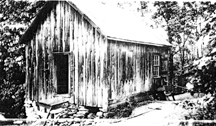
Photo: Pre-Rosenwald School, Woodville. VA. (n.d.) (Courtesy of the Fisk University Rosenwald Fund Card File Database, negative 0685)
-
1876
Scrabble School founder Isaiah Wallace is born to former slaves Charles and Annie Wallace.
1888
African-American landowners Wood and Albert Grant purchase 90 acres in Woodville—the future site of Scrabble School.
1896
U.S. Supreme Court endorses the doctrine of "separate but equal" in Plessy v. Ferguson.
1900
Rappahannock County enrolls 636 African-American students.
1904-07
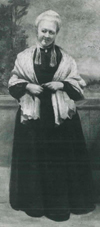
Philanthropist Anna T. Jeanes sets the stage for Rosenwald’s efforts by donating over a million dollars to support southern African-American schools.Photo: Southern Education Fund
-
1913
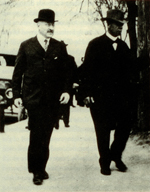
Booker T. Washington convinces Sears Roebuck magnate Julius Rosenwald to fund the construction of six schools in Alabama.Photo: University of Chicago Library.
1914
Rosenwald establishes a rural school building program throughout the South for African-American children.
1915
Virginian schools employ one "Negro teacher" for every 80 school-aged African-American children.
1917
The Julius Rosenwald Fund is established. Professional architects are contracted to design innovative schools for communities.
-
1919
On average, each white teacher in Virginia is responsible for 33 white pupils, while each African-American teacher has 48 African-American pupils.
1919
Isaiah Wallace begins to raise money to build a Rosenwald School—the future Scrabble School.
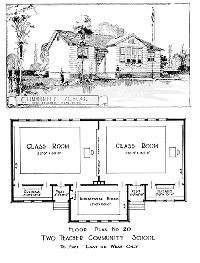
1920
The Rosenwald Office develops a program of detailed plans and specifications for schools; these become a guidebook for the construction of thousands of schools across the country.Drawn by S.L. Smith, published in "Community School Plans," 1924
-
1921
Wood Grant donates two acres for the Scrabble School.
1921-22
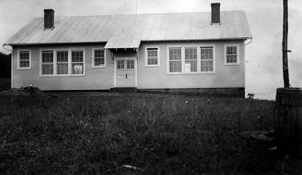
The Scrabble School is built, the first Rosenwald School in Rappahannock County.Photo: Fisk University Rosenwald Fund Database
1923-28
Rappahannock County communities in Washington, Flint Hill, and Amissville build Rosenwald Schools.
1928
1 in 5 schools for African Americans in the South is a Rosenwald School.
-
1932
Julius Rosenwald dies at age 69. The Rosenwald Schools Program ends after sponsoring 4,977 schools, 217 teacher homes, and 163 shop buildings in 15 states.
1948

George Washington Carver High School. Photo: Leon Reed, Flickr
Isaiah Wallace dies at age 69. Twenty-two miles from Scrabble, George Washington Carver High School opens as the closest high school for African Americans.1954
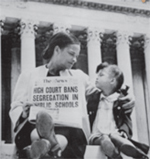
In Brown v. Board of Education ruling, the Supreme Court overturns Plessy v. Ferguson to integrate the schools.
Photo: Cass Gilbert /Bettman /Corbis, copyright 2002-2006, National Education Association -
1954-67
Scrabble School remains open as a segregated school.
1956-58
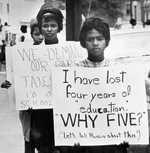
Virginia passes a series of "Massive Resistance" laws to avoid school integration. Over the next decade, tens of thousands of African-American students are denied public education as schools in several cities are closed.Photo: Richmond Times-Dispatch
1961
The School Board adds toilets to Scrabble School.
1967
White students join African-American children at Scrabble School for the 1967-68 school year.
-
1968
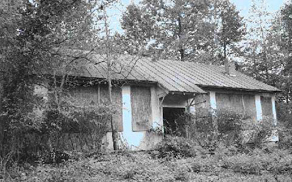
Rappahannock County builds a new, integrated school, and closes Scrabble School. The building gradually falls into disrepair; the grounds are used as landfill.Photo: Department Historic Resources National Register Nomination Form
1990
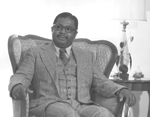
E. Franklin Warner rallies community support and founds the "Save Our School" grass-roots initiative.Photo: Robert Bowser Photography
2002
Warner holds the first meeting of the Scrabble School Preservation Foundation.
-
2007
The National Park Service and Virginia add Scrabble to National and State Historic Registers.
2008
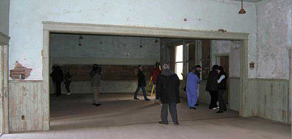
The renovation and preservation of the Scrabble School building begins.Photo: Scot French
2009
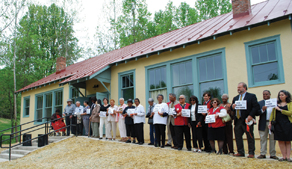
Scrabble School reopens as the Rappahannock Senior Center at Scrabble School and Heritage Center.Photo: Courtesy of the National Trust for Historic Preservation
-
2010
Installation of exhibit on the history of Scrabble School
2012-13
Educational materials created for elementary students. Rappahannock County Schools to incorporate into official curriculum.
2014
Planned—Interactive exhibit for children